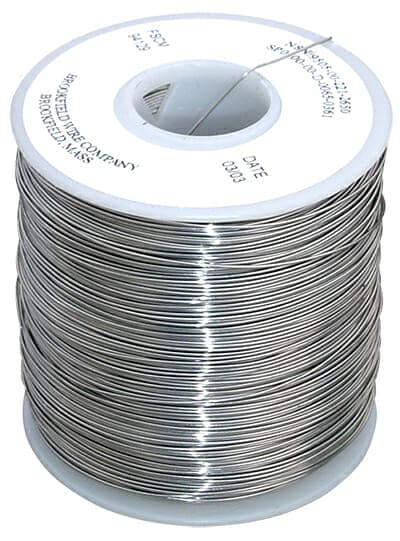Nickel’s Impact on the Price of Stainless Steel
Since nickel is such an integral part of why stainless steels are so widely used, anyone working with stainless steel must be aware of the price of nickel.
About two-thirds of all nickel that is mined in the world is used in the production of stainless steel. Because of this, the prices of nickel and stainless steel are almost always directly correlated. As demand increases in the need for stainless steel, the nickel market reacts by trying to match the demand.
For instance, in 1999 there was an increase in demand for stainless steel, which caught nickel producers off guard. This was due in part to shipping issues held by distributors, as well as several Canadian nickel producers shutting down due to a strike. Once the price of nickel started to skyrocket due to a lack of supply, stainless steel prices began to soar as well. Prices on nickel and stainless didn’t level out for about a year until the production of nickel finally met the demand by stainless steel producers.
Although stainless steel products, such as stainless steel wire, stainless steel banding, and stainless steel strip coil, are heavily made from chromium, nickel is less abundant and more volatile. Throughout history, the pricing of stainless steel heavily follows the price of nickel, even though it only makes up a small percentage of stainless steel in mass. In stainless materials like 302, 303, 304, 304L, and 316L, nickel only makes up 8%-12% of the total mass of the material although it constitutes upwards of 65% of the cost.
In rare instances though, the cost of nickel may not be directly correlated to the price of stainless steel. For example, at the beginning of 2021, the price of stainless steel started to skyrocket despite the consistent decrease in the price of nickel. This anomaly has been caused by the incredible strain that has been dealt to the manufacturing supply chain as a result of the COVID-19 pandemic.

What Makes Stainless Steel So Great?
Stainless steel has been used in manufacturing for more than one hundred years. Many iron-based alloys are composed of stainless steel, but what sets them apart is their corrosion resistance. Unlike conventional steel, these alloys do not rust when exposed to water alone.
Chromium is what makes stainless steel stainless, and nickel is the element that enables it to become such a versatile alloy. Nickel provides these properties by changing the crystal structure of the steel to an austenitic (face-centered cubic crystal) structure at almost all temperatures. Conventional steel has a ferritic (body-centered cubic crystal) structure at ambient temperature. It is the addition of sufficient nickel — typically 8-10% — that imparts these unique properties.
When nickel is present in stainless steel, these materials become easy to form and weld since they remain ductile at very low temperatures, but are still able to be used for high-temperature applications. In addition, stainless steels are non-magnetic, meaning it can be made into an exceptionally wide range of products, spanning applications in the chemical industry, the health sector, and domestic uses.
You can even see the uses of stainless steel expand to modern architecture. The restorations of St Paul’s Cathedral and the Savoy Hotel canopy in London, U.K., the Chrysler Building in New York City, and the Thyssen Building in Germany all rely on the durability that is expected from nickel-containing stainless steel.
Conventional steels and non-nickel-containing stainless steels are limited in that capacity since they are magnetic, while other non-magnetic metals lack the durability found in stainless steel. Nickel-containing stainless steels are so important that these grades make up 75% of stainless steel production. The best-known of these are Type 304, which has 8% nickel, and Type 316, which has 11%.
Not All Stainless Steel Contains Nickel
Not all stainless steel alloys are heavily tied to the cost of nickel. Materials like 410 and 430 are alloys that rely very minimally on nickel. Less than .75% of their composition is allotted for the use of nickel. The downside to the lack of nickel is that this material is more brittle than alloys that do contain nickel. Therefore, 410 and 430 are traditionally used in decorative trim or other applications that don’t require high-stress use.
The U.S. is now 100% dependent on imports and scrap, as these are the two main ingredients of stainless steel since it sold its stockpile of nickel in 1999. Most nickel-containing materials are fully recyclable at the end of the product’s useful life, which combined with their high value, encourages manufacturers to embrace material recycling. This process reduces the environmental impact of nickel-containing stainless steel by reducing both the need for new materials and the energy that their production uses. For example, the amount of stainless steel scrap currently being used reduces the energy required for stainless steel manufacture by around one-third over using 100% virgin materials. Watch this space and watch the nickel prices, as usually if they increase so does the price of stainless steel.
One product that relies heavily on the price of stainless steel is stainless steel wire. stainless steel wire has a variety of uses in many industries because of its various characteristics. One of the greatest advantages of stainless steel wire is its corrosion resistance. Due to its durability, the product is a good medium-to-long-term investment in terms of affordability. High temperatures and mechanical stress are not a problem for stainless steel wire. Radiation-proof and easy to clean, it is also the perfect material to use in medical settings

